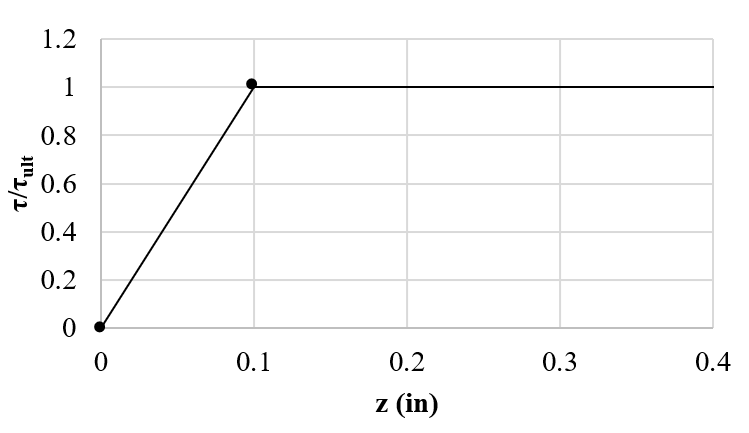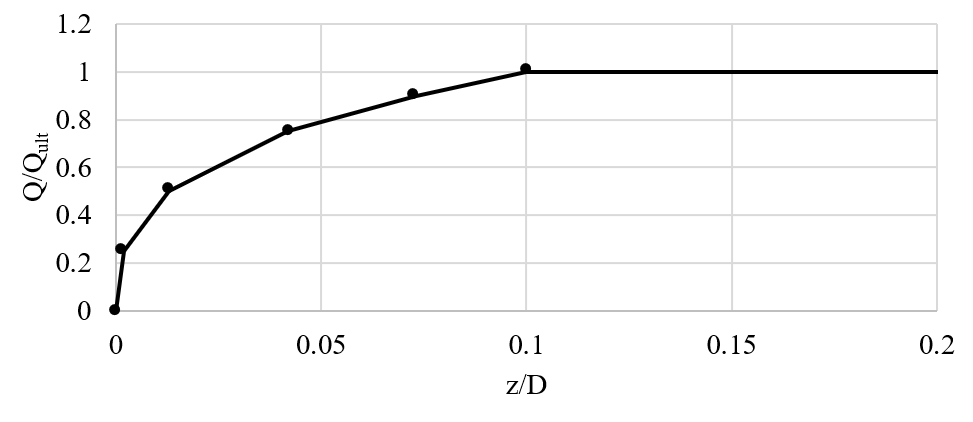API Sand
The American Petroleum Institute (2002) defines the strength for a driven pile in sand as follows:
- Friction Angle - A parameter to quantify the shear strength of soil. For API Sand, a cohesionless soil, the effective shear strength of soil (
 ) is calculated as
) is calculated as  where the effective normal stress (
where the effective normal stress ( ) is multiplied by the tangent of the friction angle (
) is multiplied by the tangent of the friction angle ( ).
). - Coefficient of Lateral Earth Pressure - The ratio of the horizontal to the vertical stress
- Bearing Capacity Factor - A multiplication factor to characterize the bearing resistance (q) as a ratio of the overburden pressure (
 ),
),  , where Nq = Bearing Capacity Factor. Refer to the theory manual for more information.
, where Nq = Bearing Capacity Factor. Refer to the theory manual for more information. - Maximum Unit Skin Friction - The maximum allowable unit skin friction that can be computed in the soil layer. The restriction is to prevent an overestimate of the skin friction, especially for thick soil layers.
- Maximum Unit End Bearing Resistance - The maximum allowable unit end bearing resistance that can be computed in the soil layer. The restriction is to prevent an overestimate of the end bearing resistance, especially for thick soil layers.

API Sand Skin Friction (t-z) Load Transfer Curve

API Sand and Clay End Bearing (Q-z) Load Transfer Curve
DESIGN PARAMETERS FOR COHESIONLESS SILICEOUS SOILS* (API 2002)
API (2002) provides some recommendations on the soil properties of cohesionless soils.
Density | Soil Description | Soil-Pile Friction Angle | Max Skin Friction Values | Bearing Capacity Factor, Nq | Max Unit End Bearing Values |
Very Loose | Sand | 15 | 47.8 (1.0) | 8 | 1.9(40) |
Loose | Sand | 20 | 67.0(1.4) | 12 | 2.9(60) |
Medium | Sand | 25 | 81.3(1.7) | 20 | 4.8(100) |
Dense | Sand | 30 | 95.7(2.0) | 40 | 9.6(200) |
Dense | Gravel | 35 | 114.8(2.4) | 50 | 12(250) |
*The parameters listed in this table are intended as guidelines only. Where detailed information such as in situ cone tests, strength tests on high-quality samples, model tests, or pile driving performance is available, other values may be justified.
**Sand-Silt includes those soils with significant fractions of both sand and silt. Strength values generally increase with increasing sand fractions and decrease with increasing silt fractions.
For more information, see the Axial Analysis Theory Manual.